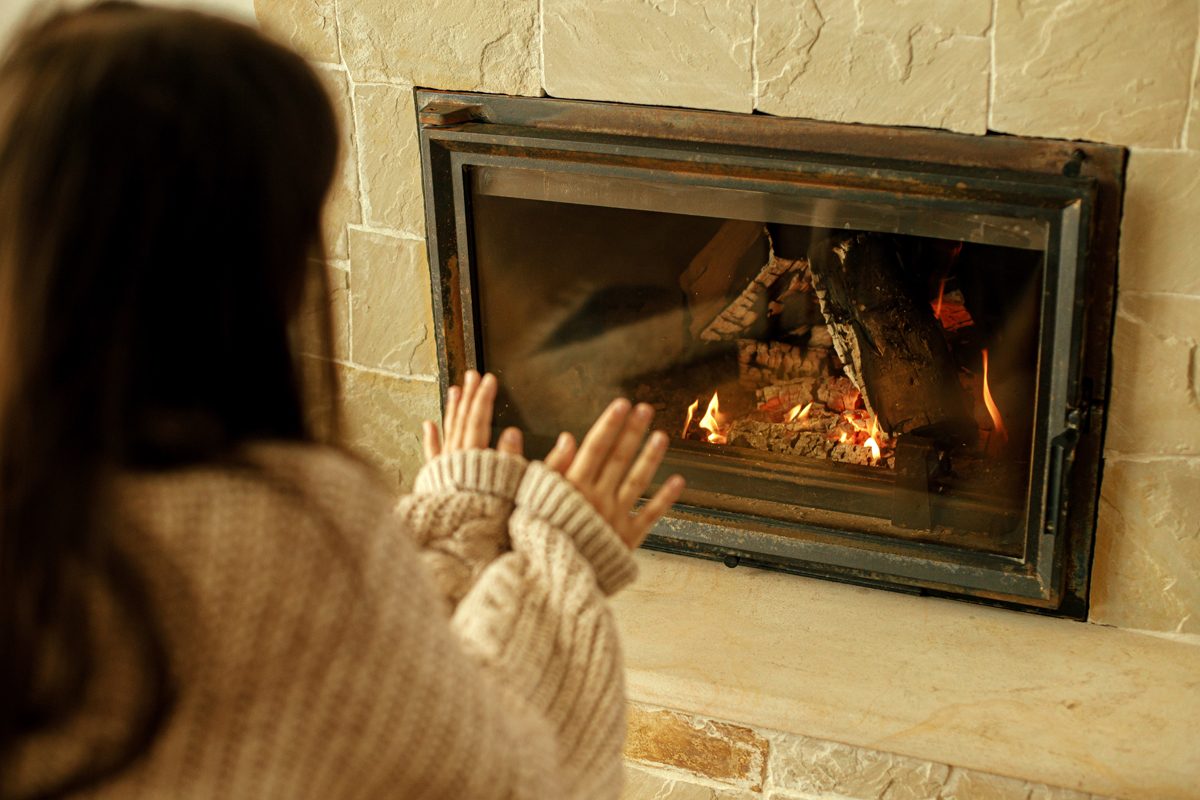You can choose from a variety of designs for your house or area, including rustic, colonial, contemporary, modern, old world, Tuscan, and log cabin. The final piece of art will be influenced by the color, shape, and installation in addition to the type of natural stone veneer you select. Read on to learn more!
Modern and Contemporary Stone Hearths
The most common fireplace design nowadays is stacked stone, which involves placing natural veneer stones closely together with either a small recessed joint or no joint visible.
Ledgestone, ashlar (which displays a different face of the stone, usually slightly darker), or a combination of the two are the stone veneer shapes used to create a stacked stone appearance.
Some stonemasons, designers, and homeowners use square or mosaic pieces as accents to break up the stacked stones.
Traditional and Rustic Stone Hearths
The round fieldstones that have been recovered from fields, farms, and abandoned stone walls are classic to New England. To adhere these round stones to a level, vertical surface, they are first collected and then cut to a thickness of about 1.25 inches.
For newly built fireplaces or to reface an existing brick fireplace, round fieldstone thin veneer is lighter and simpler to install while still giving the appearance of a fully rounded natural stone. Here are some rustic fireplace design ideas using ledgestone, stacked stone, and round stone.
The Impact That a Joint Can Have
The joint technique used is one element of the installation that can have the largest aesthetic impact. Standard joints, wide joints, and dry-laid or recessed joints are the three most common application types for fireplace stone.
The overall appearance and design will also be significantly impacted by the color of the mortar used in the pointing procedures. The joints in every installation should be as consistent as feasible.
Recessed or dry-laid mortar joints
With virtually no seam and no mortar visible between stones, dry-laid mortar joints give the impression that the stones are touching everywhere. Paper-thin joints are the name given to these joints. The additional time required to precisely shape each stone to fit the surrounding stones will be compensated for if you want these joints.
You should order extra stone to allow for enough material for tight joints, and you should anticipate having more waste from trimming. The mortar joint lines are nicely shadowed by recessed mortar joints, which are 1/2 inch below the stone’s face.
Common Grout Joints
Standard grout joints can be flush with the stone face or recessed 1/4 inch from it. They can be 1/4 to 3/8 inch thick for interior stone veneer and 3/4 to -1 1/2 inches thick for exterior fireplaces and chimneys.
The edges of stones are naturally uneven. Installing standard grout joints is simpler and requires only 15% waste and a typical amount of shaping and trimming.
Grout Joints That Are Wide
Regardless of the shape of the stone veneer, this is typically the most rustic fireplace look. Large fireplaces and the interior and exterior chimneys of country homes have joints that are one inch wide. In certain cases, the mortar is brushed over the stone veneer of the fireplace to create a brushed joint appearance. Less stone veneer waste is possible with wide fireplace joints.
Customize Your Fireplace by Combining Different Stone Colors and Shapes
Finding the ideal combination of colors and shapes can be challenging when choosing the ideal natural stone option for your area. Your fireplace will be the room’s main attraction and the focal point of the entire design, regardless of its location.
To truly make the space your own, sometimes a little personalization is all that is required. Whether you want to create a traditional ledgestone fireplace with a granite mantel, a rustic fireplace, a contemporary design, or a bluestone hearth stone, the best way to accomplish this is to combine various colors and shapes of natural thin stone veneer to create your own one-of-a-kind piece of art.
Natural stone thin veneer frequently serves as the foundation for a stone veneer fireplace’s focal point.
Stone is a timeless and adaptable material that can be used in a variety of ways to create the perfect fireplace focal point.
Because of its versatility, stone veneer in particular is a great option for cladding a stone fireplace’s exterior.
All things considered, stone is a fantastic choice for creating the ideal fireplace focal point.
Since natural stone thin veneer is simple to install and maintain, many homeowners choose it. It can be installed in a variety of ways, including waves, curves, and straight lines. Real stone is frequently used to create rustic stone fireplaces. Stone veneer in the shape and color of your choice is applied to the walls of the fireplace.
The Greatest Aspect?
For any type of fireplace, chimney, or outdoor hardscape design, stone comes in a range of hues, textures, and sizes.
Fireplace stone veneer is a great option for chimneys, fireplaces, and other applications because it comes in a variety of colors, textures, and sizes. Stone veneer can give a touch of elegance to any living area because of its durability and natural appearance. There are numerous options available, depending on your preference for the sleekness of smooth-cut stones or the rustic appearance of stacked stones. Because natural stone veneer is heat-resistant and can tolerate high temperatures, it is especially well-suited for fireplaces.
There are countless options. For use in residential or commercial architecture, real stone that is all natural and thinly cut can be used on any vertical surface, indoors or out. economical and competitively priced when compared to artificial stone.
GAS FIREPLACE INSTALLATION PHOENIX & CHANDLER, ARIZONA
If you live in Chandler, or surrounding cities in the Phoenix, Arizona area and want a gas fireplace installed; Diversified Builder, Inc. can help! We offer indoor and outdoor fireplace installation in Phoenix & Chandler, Arizona. We also install commercial and residential brick veneers. Contact us Today!






